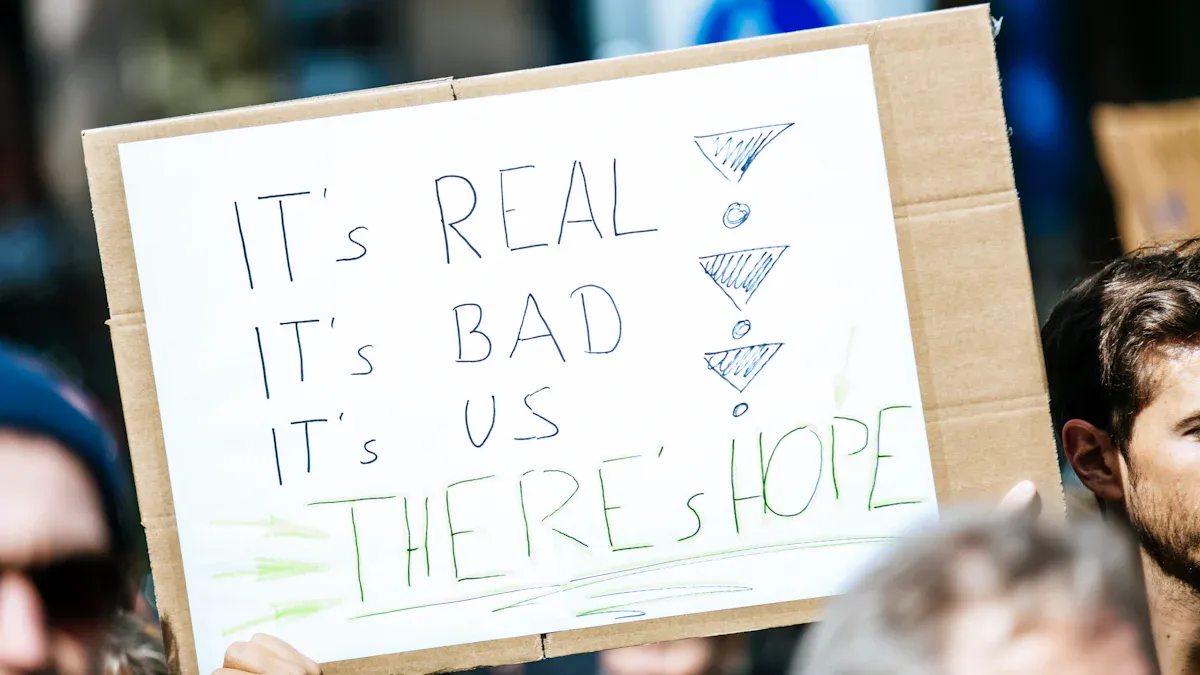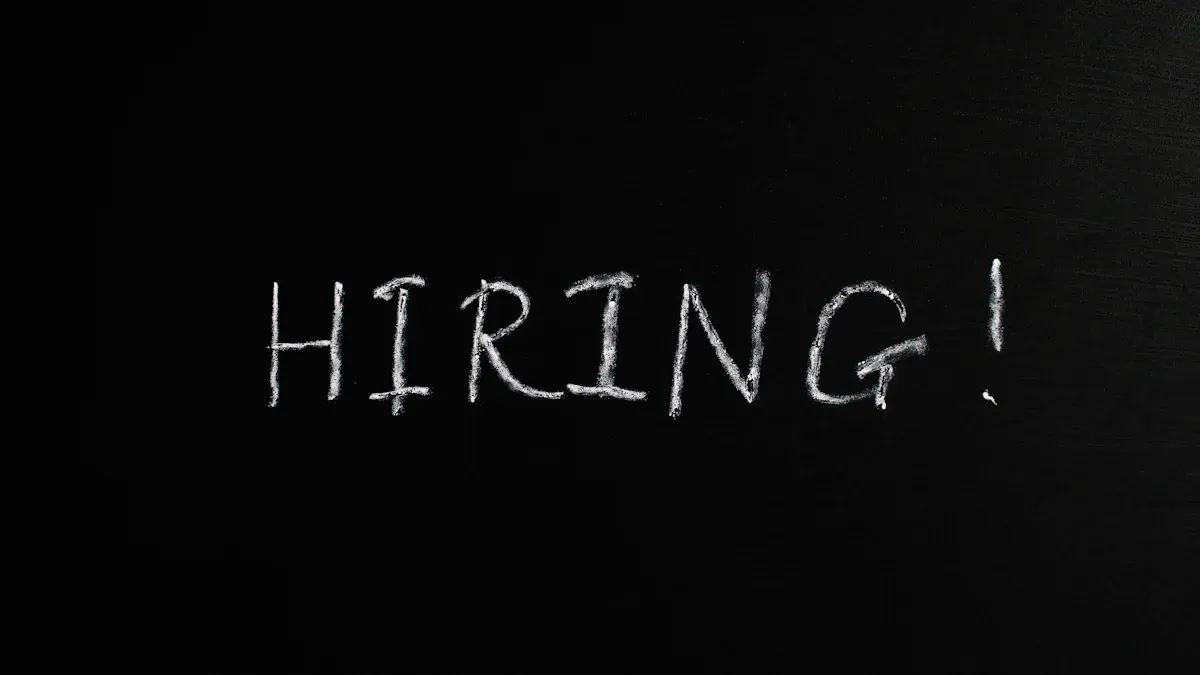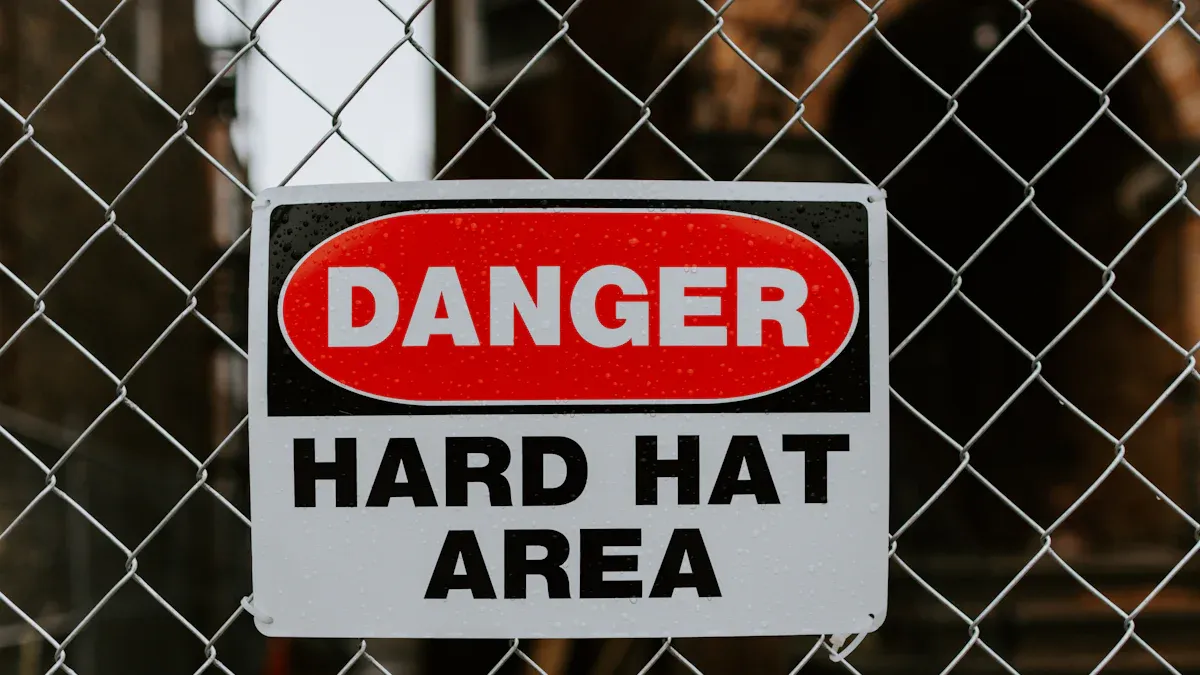How to Spot and Avoid Bad Hires in Recruitment Processes

A bad hire can significantly harm your organization. It refers to an employee who lacks the skills, attitude, or fit needed to succeed in their role. The consequences of hiring the wrong person extend beyond their individual performance. Team dynamics often suffer, leading to missed deadlines and errors. Colleagues may need to pick up the slack, which slows productivity and delays projects. Research shows that poor hiring decisions erode trust in leadership, lowering morale and engagement. This ripple effect can cost your company both time and money, making it essential to minimize bad hire risk.
Characteristics of Bad Hires

Common Traits of a Bad Hire
Lack of required skills or qualifications
One of the most common signs of a bad hire is a lack of the necessary skills or qualifications for the role. When a candidate cannot meet the technical or professional demands of the job, their performance often falls short. This can lead to low-quality work, missed deadlines, and frustration among team members. A candidate who struggles to adapt to the role may also require constant supervision, which drains resources and time.
Poor cultural fit with the organization
A lack of cultural fit can disrupt team dynamics and create tension in the workplace. Employees who do not align with your company’s values or work style may struggle to collaborate effectively. This misalignment often leads to disengagement and resistance to feedback. Over time, it can erode morale and hinder productivity.
Negative attitude or lack of motivation
A bad attitude is another red flag to watch for. Candidates who display negativity or a lack of enthusiasm during the hiring process often carry these traits into the workplace. This can manifest as resistance to change, poor communication, or a refusal to take accountability. Such behaviors not only affect their own performance but can also spread negativity across the team.
Warning Signs to Avoid Bad Hires
Inconsistent or exaggerated resumes
Studies reveal that 70% of workers admit to lying on their resumes, with 37% doing so frequently. Exaggerations about skills, experience, or achievements are common signs of a bad hire. Always verify the information provided by candidates through reference checks and skills assessments.
Poor communication during interviews
Communication is a critical skill for any role. Candidates who struggle to articulate their thoughts, provide unclear answers, or fail to engage during interviews may lack the interpersonal skills needed for success. Poor communication is one of the most common signs of a bad hire and should not be overlooked.
Lack of preparation or interest in the role
A candidate who arrives unprepared or shows little interest in the position raises immediate red flags. Signs of disengagement, such as vague responses or a lack of questions about the role, suggest they may not be fully committed. This lack of motivation often translates into poor performance on the job.
The Costs and Consequences of Bad Hiring Decisions
Direct Costs of a Bad Hire
Recruitment and onboarding expenses
The financial impact of a bad hire begins with recruitment and onboarding. Studies show that hiring costs can range from $4,700 for a typical role to $28,000 for executive positions. When you hire the wrong person, these expenses go to waste. You may need to repeat the hiring process, which increases costs further. Additionally, the Society for Human Resource Management (SHRM) estimates that the cost of a bad hire is about 40% of the employee's annual salary. For a $50,000 salary, this translates to a $20,000 loss.
Lost productivity and revenue
A bad hire can significantly reduce productivity. Research indicates that underperforming employees can cause a 36% drop in team output. Colleagues often need to compensate for the bad hire's shortcomings, which diverts their focus from their own tasks. This not only slows progress but also leads to lost revenue. Poor performance and missed deadlines can harm your bottom line, making the cost of a bad hire even more evident.
Indirect Costs of Bad Hires
Impact on team morale and collaboration
Bad hires can disrupt team dynamics and lower employee morale and engagement. A survey found that 44% of CFOs believe bad hires negatively affect morale. Frustration builds when team members must handle extra workloads caused by underperforming colleagues. Over time, this tension can lead to burnout and disengagement, further reducing productivity.
Damage to company reputation
The presence of a bad hire can tarnish your company's reputation. Poor customer interactions or subpar work can harm your brand image. Additionally, high turnover caused by bad hires may signal instability to potential candidates, making it harder to attract top talent.
Increased turnover and rehiring efforts
Bad hires often contribute to high turnover. A study by Harvard Business Review revealed that 80% of companies link turnover directly to poor hiring decisions. When top performers leave due to frustration, you face the challenge of rehiring and retraining, which adds to your hiring costs.
Note: Avoiding bad hires not only saves money but also protects your team's morale and productivity.
Strategies to Avoid Bad Hires

Crafting Accurate Job Descriptions
Clearly define roles, responsibilities, and expectations
Creating clear job descriptions is the first step in preventing bad hires. When you define roles and responsibilities precisely, candidates can better understand what the job entails. This clarity helps attract the right candidates who meet your expectations. For example, outline specific tasks, goals, and performance metrics for the role. Avoid vague language, as it can confuse applicants and lead to mismatched hires.
Highlight required skills and qualifications
Better job descriptions also emphasize the skills and qualifications needed for success. Include both technical and soft skills to ensure a well-rounded candidate pool. For instance, if the role requires teamwork, mention collaboration as a key skill. A detailed job description not only attracts suitable applicants but also sets clear expectations, reducing the risk of a bad hire.
Tip: Use job descriptions to align expectations with candidates from the start. This step is crucial for improving your recruitment strategy.
Adopting Structured Interview Processes
Develop standardized questions for consistency
A structured interview process ensures fairness and consistency. By asking all candidates the same set of questions, you can compare their responses objectively. This approach reduces bias and helps you conduct better interviews. For example, ask questions that assess dependability, initiative, and willingness to learn.
Trait | Example Question |
|---|---|
Dependability | Tell me about a time you struggled with work-life balance. What did you do? Did you manage to solve the problem? |
Initiative | Tell me about a time you took the lead in a team project. What was the project outcome? |
Willingness to learn | Tell me about a time someone criticized your work. How did you respond and what did you learn? |
Focus on behavioral and situational questions
Behavioral and situational questions reveal how candidates handle real-world challenges. For example, ask, "Tell me about a time you resolved a conflict at work." These questions help you evaluate problem-solving skills and cultural fit. A structured interview process like this significantly reduces the chances of hiring the wrong person.
Conducting Skills Assessments
Use practical tests to evaluate technical abilities
Skills assessments are essential for identifying qualified candidates. Tools like Screen and WeCP AI allow you to measure technical and functional competencies effectively. These assessments provide objective data, helping you make informed decisions during the hiring process.
Tool Name | Description |
|---|---|
Screen | Measures technical, functional, and domain competencies using AI-powered assessments tailored for various roles and industries. |
WeCP AI | Creates high-quality, diverse, and scalable assessment questions, ensuring accuracy and reliability. |
Assess problem-solving and critical thinking skills
Problem-solving tests help you evaluate a candidate's ability to think critically. Methods like case studies and simulations present real-world scenarios, allowing candidates to demonstrate their skills. For example, ask them to analyze a business problem and propose solutions. These assessments ensure you hire individuals who can handle challenges effectively.
Note: Incorporating skills assessments into your hiring practices strengthens your recruitment strategy and minimizes the risk of a bad hire.
Fostering Collaborative Hiring Practices
Involve multiple team members in the interview process
Involving multiple team members in the hiring process creates a more balanced and thorough evaluation of candidates. When team members participate, they share the responsibility of assessing candidates, allowing recruiters to focus on coordination. This approach ensures a more comprehensive review of both technical skills and cultural fit.
Additionally, having different stakeholders meet the candidate leads to better discussions and decision-making. Team members bring diverse perspectives, which help identify strengths and weaknesses that might otherwise go unnoticed. Candidates also benefit from this process. Meeting various team members gives them a clearer understanding of your company culture, helping them decide if the role aligns with their expectations.
This collaborative approach often results in fairer hiring decisions. It fosters a sense of ownership among team members, leading to a more engaged and satisfied workforce. Ultimately, this increases the likelihood of hiring someone who will succeed in the role and reduce the risk of a bad hire.
Encourage diverse perspectives to reduce bias
Diverse perspectives play a critical role in reducing bias during hiring. Everyone has unconscious biases, but creating a space to discuss them helps your organization hold itself accountable. Encouraging open dialogue about these biases allows your team to identify blind spots and make more objective decisions.
Fostering inclusivity in your hiring process also improves workplace dynamics. A culture that values diverse viewpoints ensures that candidates are evaluated fairly, based on their skills and potential. This approach not only reduces the chances of a bad hire but also strengthens your team by promoting acceptance and collaboration.
Leveraging Technology to Reduce Bad Hire Risk
Use applicant tracking systems (ATS) for better screening
Applicant tracking systems (ATS) streamline the hiring process and improve candidate selection. These tools use AI to intelligently filter resumes, ensuring you focus on the most qualified applicants. ATS platforms also offer customizable features tailored to your business needs, making them highly adaptable.
By automating repetitive tasks, ATS reduces time-to-hire and lowers recruitment costs. It also enhances the candidate experience, which improves your company’s reputation as an employer. Additionally, ATS helps you adhere to diversity and inclusion policies by eliminating biases in the initial screening process. These benefits make ATS an essential tool for minimizing the risk of a bad hire.
Analyze hiring metrics to identify patterns and improve
Analyzing hiring metrics provides valuable insights that can refine your recruitment strategy. Metrics like time-to-hire and quality-of-hire reveal patterns in your hiring process, helping you identify areas for improvement. For example, a long time-to-hire might indicate inefficiencies in your screening or interview stages.
Recruitment analytics involves collecting and interpreting data to make informed decisions. By leveraging these insights, you can optimize your hiring process to attract top talent and improve candidate quality. This data-driven approach ensures smarter hiring decisions, reducing the likelihood of a bad hire and enhancing overall efficiency.
Tip: Use technology and data to make your hiring process more effective. This reduces costs and improves outcomes for your team.
Learning from Bad Hiring Decisions
Conducting Post-Hire Reviews
Evaluate the performance of recent hires
Post-hire reviews are essential for assessing how well a new hire performs in their role. To conduct effective reviews, follow these steps:
Encourage open and honest feedback from team members. Start with junior employees to minimize bias.
Use a scorecard to maintain consistent evaluation criteria across all reviewers.
Share initial impressions to identify recurring themes or insights about the new hire.
Narrow down candidates for future roles based on feedback and scores.
This structured approach ensures you gather actionable insights to improve your recruitment process.
Identify gaps in the recruitment process
Post-hire reviews also help you identify weaknesses in your recruitment process. By reflecting on hiring outcomes, you can spot trends and measure the effectiveness of your strategies. This practice improves candidate experience and enhances recruitment efficiency. For example, if a new hire struggles with certain tasks, it may indicate a mismatch between job descriptions and actual responsibilities.
Tip: Regularly reviewing post-hire performance helps you refine your hiring criteria and avoid repeating hiring mistakes.
Gathering Feedback from Teams
Understand team dynamics and challenges with new hires
Team feedback provides valuable insights into how a new hire integrates into the workplace. Ask team members about any challenges they face when collaborating with the new hire. This feedback highlights areas where the new hire may need additional support or training. It also reveals how well they fit into the team’s culture and workflow.
Use feedback to refine hiring criteria
Feedback from your team can guide you in improving your hiring process. For instance, if team members report that a new hire lacks specific skills, you can adjust your job descriptions or interview questions to address this gap. This iterative approach ensures you continuously refine your recruitment process to attract better candidates.
Note: Team feedback is a powerful tool for handling bad hires and improving future hiring outcomes.
Continuously Improving Recruitment Processes
Stay updated on industry best practices
Adopting industry best practices keeps your recruitment process competitive and effective. Some key strategies include:
Source candidates from the right platforms, such as social media for early-career professionals or job boards for experienced hires.
Standardize evaluations and involve hiring managers to streamline interviews.
Build a talent pipeline by engaging with potential candidates before roles open.
Highlight your company culture early to attract candidates who align with your values.
Strengthen your employer brand to appeal to top talent.
Attend industry events to connect with potential candidates and understand their goals.
These practices help you stay ahead and reduce the risk of bad hiring decisions.
Train hiring managers on effective recruitment techniques
Training programs equip hiring managers with the skills needed to make better hiring decisions. Consider these options:
Training Program Name | Description |
|---|---|
Interview Training For Hiring Managers | Custom-built training for hiring managers and interviewers. |
License to Hire Training | Focuses on essential skills for effective hiring. |
Hiring Manager Diversity Training | Embeds diversity into the hiring process. |
Executive Hiring Manager Training | Tailored for executive-level hiring managers. |
Bar Raiser Training | Enhances the quality of hiring decisions. |
Online Interviewer / Hiring Manager Training | Provides flexibility for remote learning. |
Investing in these programs ensures your team stays prepared to handle bad hires and improve recruitment outcomes.
Tip: Continuous learning and adaptation are key to avoiding hiring mistakes and building a strong workforce.
Identifying and avoiding bad hires is crucial for maintaining productivity, morale, and financial stability. Structured and collaborative recruitment processes offer long-term benefits:
Team involvement in hiring fosters engagement and reduces unconscious bias.
Clear communication and expectations improve the candidate experience.
Collaborative efforts speed up hiring, allowing teams to focus on priorities.
Data-driven strategies further minimize risks by using skills-based assessments and objective metrics. These approaches ensure better alignment with company values and reduce costly hiring mistakes. Implement these strategies to build a stronger, more cohesive team and achieve better hiring outcomes.
FAQ
Who is MokaHR?
MokaHR provides AI-powered recruitment solutions that automate screening, surface data-driven insights, and scale hiring for enterprises. Trusted by HR teams worldwide, MokaHR’s platform helps you move faster and decide smarter at every stage of recruitment.
What’s the best way to identify a bad hire during recruitment?
Spotting trouble early saves headaches later. Look for concrete, objective signals and verify everything you’re told.
Practical checklist
Watch for resume inconsistencies or unverifiable claims — always verify with references and sample work.
Use structured interviews (same questions + scoring rubric) and work-sample tests so you judge ability, not charisma. This turns gut-feel into data.
Check communication and preparation: poor answers, vague examples, or no questions from the candidate are red flags.
Add a short practical assignment or pair-programming session for technical roles — nothing reveals real skill like real work.
How can I ensure job descriptions attract the right candidates?
A great JD filters out the wrong people before you meet them.
How to write one that works
Be specific: list day-to-day responsibilities, measurable success criteria (KPIs), and must-have vs nice-to-have skills.
Use plain language — avoid marketing fluff that attracts the curious, not the qualified.
Signal culture and working style in one line (e.g., “fast-paced, cross-functional teams; weekly demos”). That helps self-selection.
End with practical next steps: “Please include examples of X in your application” to discourage generic applicants.
Why does cultural fit matter — and how do I evaluate it without bias?
Define the behaviors that show your culture (e.g., “open feedback”, “data-driven decisions”).
Ask behavioral questions tied to those behaviors and score answers consistently.
Use panel interviews with cross-functional staff so multiple perspectives reduce single-person bias.
Where possible, use short-day trials or project-based assessments to see real collaboration in action.
What tools actually help reduce bad-hire risk?
Technology should augment judgement, not replace it — but the right tools remove noise and surface signals.
Applicant Tracking Systems (ATS) — automate screening, track metrics, and enforce consistency across roles.ATS also supports Interview scorecards, reference-check automations, and recruitment analytics to spot patterns (quality-of-hire, time-to-hire).
How should I handle a bad hire after they join?
Post-hire review: gather structured feedback from managers and peers; use scorecards to identify gaps.
Targeted support: put a 30–60–90 day performance plan with clear goals, training, and checkpoints.
Reassignment before exit: if skills mismatch but potential exists, consider a role change that better fits strengths.
If no improvement: follow your HR/legal process for transition — act swiftly to minimize team impact.
See Also
Utilizing AI For Fair And Impartial Hiring Practices
Ten Strategies To Optimize Your Hiring Process Using ATS
Advice For Using AI Tools To Enhance Interviews
Regional Recruitment Strategies: Harnessing Applicant Tracking Systems Effectively
Enhance Your Hiring Choices Using MokaHR's Monitoring Tools
From recruiting candidates to onboarding new team members, MokaHR gives your company everything you need to be great at hiring.
Subscribe for more information

